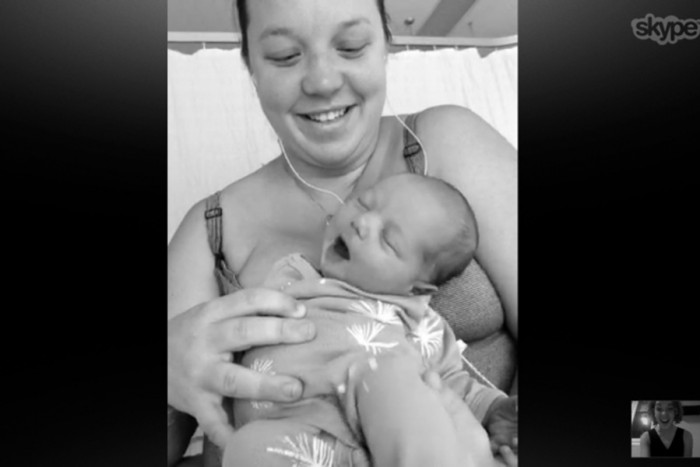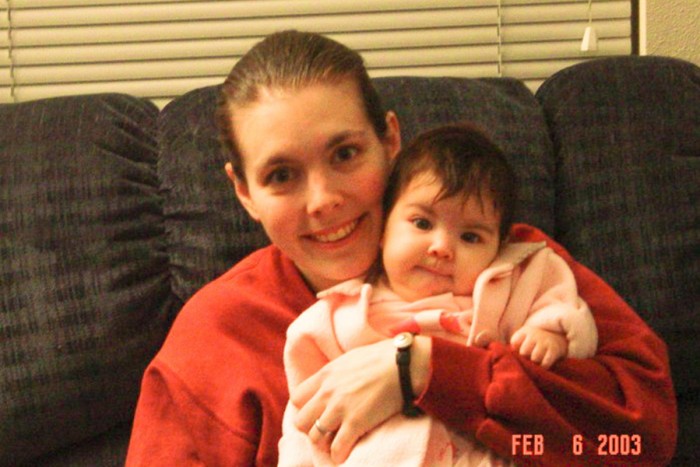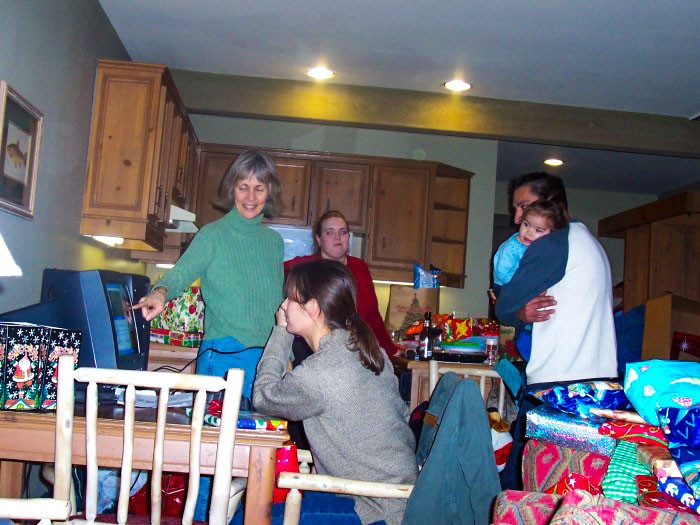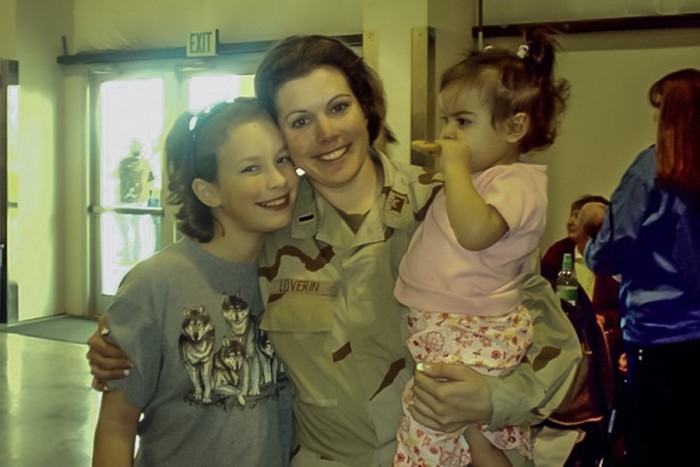
Instagram introduced me to my niece.
The next time I saw her was through iCloud. Then on Facebook. A few days later, via Skype.
In the next five months, I was immersed in photos of her furrowed eyebrows and wordless personality before we even met in the same place in the same time zone.
My oldest sister packed her bags to move from Seattle to Australia eight years ago for what we thought would be a three-year job contract. Before long, Katie had met my brother-in-law, Josh, and settled down.
Peyton Elise Barkley was born to them on February 24, 2014.
Separation of families across borders is an increasing trend, as globalization continues to make every part of the world more accessible. Emigration from the U.S., immigration into the U.S. and the military all contribute to the separation of families across international borders.
In the midst of all of this, how does one maintain a healthy relationship with a loved one? Moreover, how does one create a relationship with an infant from the other side of the world, and how will Peyton and I learn to love each other?
With adults and older children, connecting through social media can be a good supplement for relationship maintenance when in-person connections are not possible.
But while humans are born to recognize faces and voices, attempting to form or maintain a relationship with an infant through social media could lead to a relationship that is “different and not complete,” Susan Spieker, a professor of family and child nursing at the University of Washington explained.
Spieker focuses her research on infant and child social and emotional development. For a social media relationship with an infant to be substantive, she said, one would need to have multiple contacts a day using video conversations that engage the voice and the face.
“Is the connection really good? Is there a delay?” Spieker asked.
Babies need “serve and return” interactions, in which the baby coos and the adult responds — as if taking turns talking — with the infant following an eye gaze, Spieker explained.
“That’s really key,” Spieker said. “That’s the context of language learning.”
In transnational relationships, social media and video conversations can sometimes be the only option for building or maintaining relationships, as was the case for Iraq war veteran Krystal Loverin of Bend, Ore.
“My middle child was born in … October of 2002 … and then I was deployed to Iraq in February of 2003, when we invaded Iraq,” Loverin, 41, recounted. “She was three and a half months when I left. I got one week notice, so it was like, ‘Pack your bags, we’re leaving.’”

Having been married the summer prior to deportation, she was separated from her husband and two daughters by the war in Iraq.
Erika, now 12, was raised by her father and grandmother for the next year, while Loverin was in Iraq helping to establish camps, repair roads and build a sense of rapport before the war that would ensue.
Each night, Loverin would pump breast milk. She would then freeze it and overnight the milk back to her mother to nourish Erika. Erika’s crib was coated in pictures of Loverin so her mom’s face would remain familiar to her. Yahoo video chats connected Loverin to her family and newborn.
When she flew home from Iraq in October 2004 for Erika’s first birthday, Loverin could tell that their connection was not the same anymore.
“She didn’t know me then — not in person,” she remembered. “I could talk to her, but when I held her, she would cry.”
After two weeks, Loverin flew back to Iraq and wouldn’t return home until March. She calls the first year of Erika’s life her “lost year,” which she only experienced through pictures. To this day, Erika remains closer with her grandmother than with her, Loverin explained.

Engaging all of an infant’s senses plays a significant role in their ability to bond with an adult. For this reason, Spieker said social media interactions are probably more worthwhile for the adult than for the infant, who hasn’t developed enough to form the same appreciation for the interaction.
Rosemary McClure, 24, of Seattle, has only met her nephew, Greyson, twice. Greyson, now 2, was born in Okinawa, Japan, where his father has been stationed for three years.
Even after spending some time with Greyson in person, “I can tell he doesn’t really recognize or acknowledge me through video chat.”
After McClure’s brother finished service in Japan last month, the family hoped his would return to Seattle. Instead, he has been stationed as a combat controller in North Carolina, continuing the family’s reliance on social media to connect.
As of September, the National Center for Veterans Analysis and Statistics reported 603,623 veterans living in Washington state alone. But while the military plays a prominent role in the reliance on social media, expats and immigrants also face this issue.
According to the Association of Americans Resident Overseas, “there are now 7.6 million Americans living and working abroad (equal to the 13th state in terms of population).”
Additionally, the City of Seattle’s 2015 Immigrant Voting Task Force found that Seattle’s foreign-born population — including more than 57,000 naturalized citizens — currently hangs around 18 percent, with this population growing each year.
While various life forces cause people to separate from their original home and relocate, however, social media allows us to stay connected in a way that wasn’t possible before.
Pew Research Center reported that “74% of online adults use social networking sites,” and these people are increasingly using these tools to maintain close social ties.
After returning from Iraq in 2004, Loverin has since remarried and raised a 7-year-old. Her husband, Jose Membrila Medrano, is from Guerrero, Mexico. After 15 years of what Loverin called living “in the shadow” as an undocumented immigrant in the U.S., Medrano recently acquired his green card. All the while, he has connected with his family back home through social media.
“I get to watch all of my husband’s family grow up in Mexico on social media now,” Loverin said. “I like it. We help them get kindles or laptops so that we can chat with them. Otherwise, they have to go to a cyber café. But I think you get to share more.”

Loverin explained that with social media, their families on either side of the border are able to share their customs across the borders and keep up on each other’s daily lives. This allows them to pick up where they left off when they come together in person.
Social media can’t offer Peyton, Erika or Greyson the same connections to their families that they might have in person, or teach them to bond in the same way.
But in this global age, families can still stay up to date with the daily lives and growth of their loved ones across borders.
In between visits, I still get to see Peyton’s furrowed brows.

